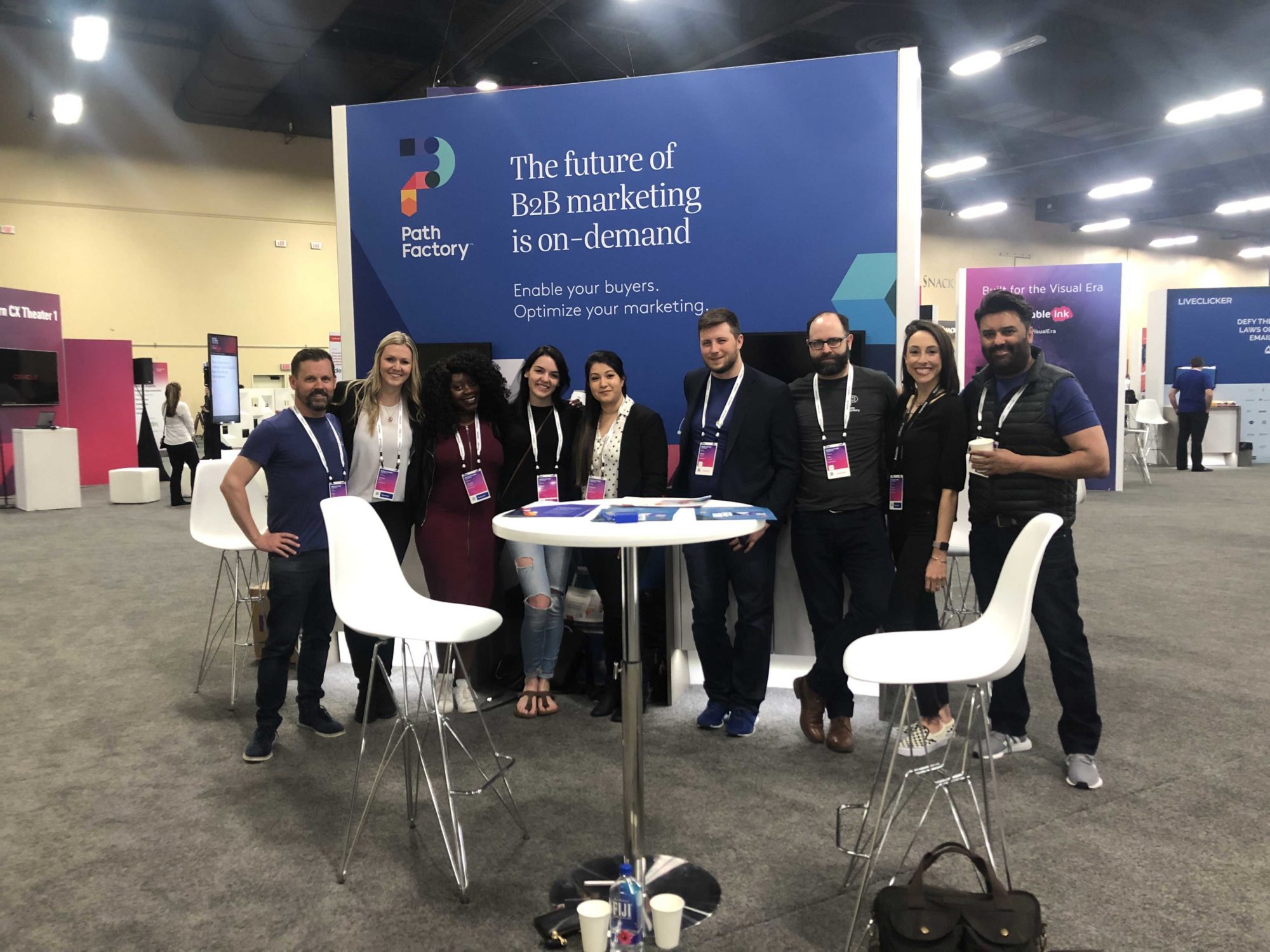
Why Content + Data Is The Key To Enabling Buyers In The Experience Economy
If there’s one big idea that everyone left Oracle Modern CX 2019 with this week, it’s this: B2B buyers are behaving more like consumers than they ever have before, and the marketers that win will be the ones that leverage data about buyer behavior to remove friction from the buyer’s journey, enabling those buyers with the right content and experiences on their terms.

It all starts with one very important realization: buyers are now in control. That means the role of B2B marketers everywhere is shifting too. It’s no longer enough to push out a bunch of emails, ads, and content hoping to funnel leads through a series of conversion points. Every time you force your buyers to wait for an email, hunt down a piece of information, or fill out a form, you create another moment of friction in their buying process.
Most marketing experiences today are chock full of this kind of friction. They’re not buyer-centric. They’re not personalized. They’re not easy. Mostly, they’re just designed to generate MQLs for marketers. And that’s not good enough. Today’s B2B buyer wants to self-direct their journey. For marketers attempting to orchestrate the near infinite number of possible journeys the old fashioned way, the result is disappointing and has far-reaching revenue implications.
The role of marketers must be to help buyers buy; to enable them to find the right information at the right time and be responsive to their needs in real time as they navigate their own unique buying process. For every buyer. At scale. The really exciting thing is that these real-time customer experiences can finally be enabled by the right combination of content, data, and artificial intelligence.
As Oracle’s Pierre Custeau explained during his keynote, B2B buyers are increasingly reluctant to give up personal information, but at the same time they expect companies to deliver a relevant experience. The only way to tackle this problem is to pay very close attention to the behavior of each and every single one of those buyers across all of the touchpoints they have with your company. It’s no longer enough to collect binary data, such as how many times they clicked on an email or filled out a form; you need a much richer dataset to truly enable buyers with personalized, real-time customer experiences at scale.
You need to know not just the quantity, but the quality of each and every engagement they have with you:
Did they consume the content?
Did they spend enough time with it to truly understand it?
What was it about?
In what order did they consume the content?
At which stage of the buyer’s journey?
What assets are the other people in their buying committee consuming?
How much time are those people spending with the content?
How many assets across how many sessions?
How many assets did they “binge” on per session?
How many minutes?
Seconds?
Carol Mendenhall, Demand Gen Operations Manager at Thomson Reuters Legal, is really excited about tracking this kind of data as buyers consume her company’s content. During her “Putting Buyers First” breakout session yesterday, Carol shared how her demand gen ops team uses PathFactory to activate this data in Eloqua to reduce friction in the buyer’s journey and create more personalized experiences at scale. For example, she programmed Eloqua to put buyers in the right nurture track based on their level of content consumption and skip nurture touches featuring a specific asset if a buyer has already spent meaningful time with it. How cool is that?
Carol also shared how activating her content with PathFactory and collecting this data helped her team realize that Thomson Reuters Legal was overinvesting in content their buyers didn’t necessarily like to engage with and underinvesting in a format buyers loved. Like many B2B companies, nearly 30% of their content library consisted of whitepapers. Unfortunately, when they analyzed which content formats their buyers spent the most time with, whitepapers didn’t even register. The top-performing format? Infographics! It turns out that buyers spend twice as long consuming short infographics as they do browsing much longer whitepapers. Who knew?

These are just a few of the very practical ways marketers can put content + data to work to remove friction and better enable your buyers, but it doesn’t stop there. Marketers like Carol are asking themselves: What other points of friction can we remove? How can we make it easier for our buyers to find the information they need? How can we make more relevant content recommendations in real-time to allow buyers to pull themselves through our marketing rather than us pushing stuff out to them like we always have?
Data can be powerful, and Oracle announced investments in Infinity and CX Unity this week that I am particularly excited about, however it’s important to remember that data isn’t an end in itself. Using that data to activate your content and make decisions about your marketing strategy will help you move from static, rules-based, server-side campaigns to dynamic, real-time, client-side experiences that remove friction from the buyer’s journey and enable buyers.
